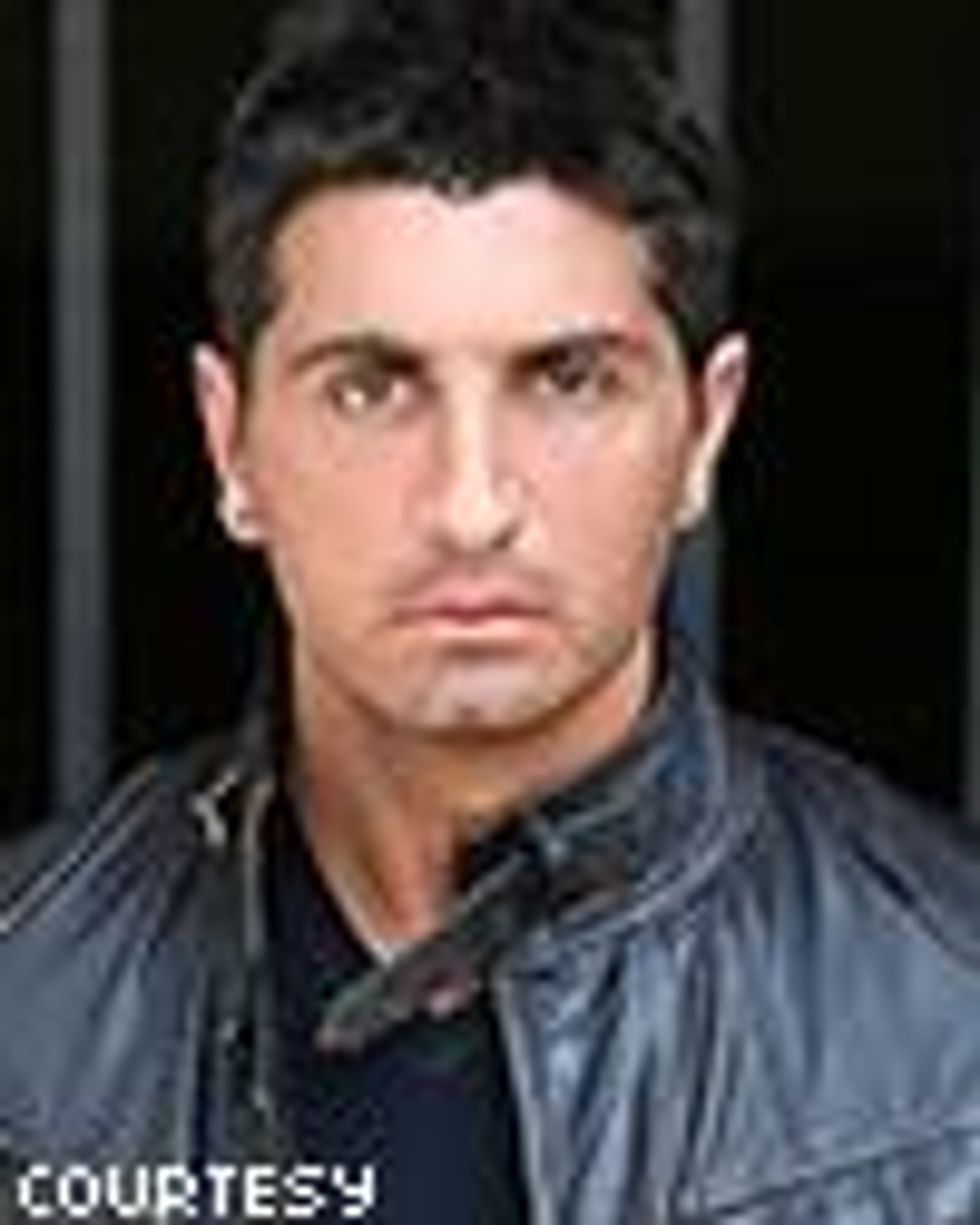Destination Guide
EuroPride 2019: Vienna Celebrates Stonewall 50
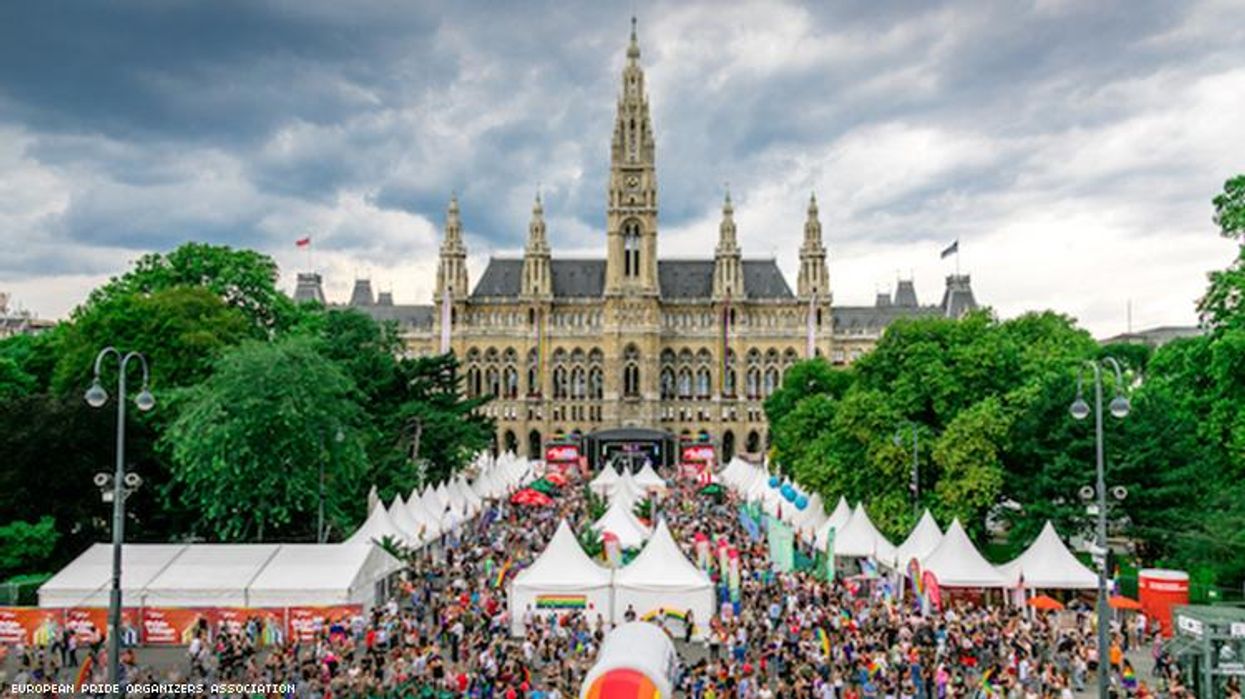
Europeans know how to celebrate, and some of them showed their fabulous queer spirits at the Austrian capital.
September 05 2019 7:49 AM EST
By continuing to use our site, you agree to our Privacy Policy and Terms of Use.

Europeans know how to celebrate, and some of them showed their fabulous queer spirits at the Austrian capital.
Vienna, the capital of Austria and centermost country on the European continent, celebrated EuroPride 2019 in a style befitting its historical status as Europe’s Imperial City and on a scale worthy of an international celebration recognizing Stonewall’s 50th anniversary.
Record-breaking turnout
About half a million people participated in what turned out to be Europe’s largest-ever LGBTQ festival of any kind.
EuroPride 2019, now in its 24th year, this year in Vienna, featured a 1.2 mile parade. The festival, themed, “Together and Proud,” filled more than two weeks from Saturday, June 1 through Sunday, June 16, with the parade happening the last Saturday of the two-week event
This summer in Vienna, queer people joined by allies, friends, and family all came together from a diverse array of countries across Europe and beyond. Many took part in more than half a month of festivities aimed at inspiring celebration and recommitment to the goal of winning freedom, equality and justice for all people in every country regardless of their gender or sexual identity or expression.
Fifty years ago inside a Greenwich Village bar in New York City, a handful of drag queens, transgender people, lesbians, gay men and others became so fed up with transphobic, homophobic and otherwise bigoted, violent and police-brutality. State-sanctioned abuse against our community enforced anti-LGBTQ policies, institutions, dominant societal attitudes and laws that codified official hate for people of diverse genders, sexual identities and orientations.
Back in 1969, during a six-day period following a particularly loathsome attack on bar patrons by New York City Police Department “vice” cops inside the original Stonewall Inn, a small “rebellion” soon blossomed into a full-fledged, now decades-long movement—but not before first becoming a bona fide riot, which as some who were in and around the Stonewall Inn in ‘69 are quick to voice their desire for we in the media to point out.
As one man who was at Stonewall told one of my colleagues in journalism: “It wasn’t a nice march or a parade; Stonewall was a fierce protest and it became a riot because we were angry. We got mad.”
It was an unexpected treat to meet Tree, an activist who was a bartender at Stonewall Inn in 1969, who still works there to this day. The Mayor of Vienna held a lavish reception for EuroPride at City Hall where Tree was the guest of honor.
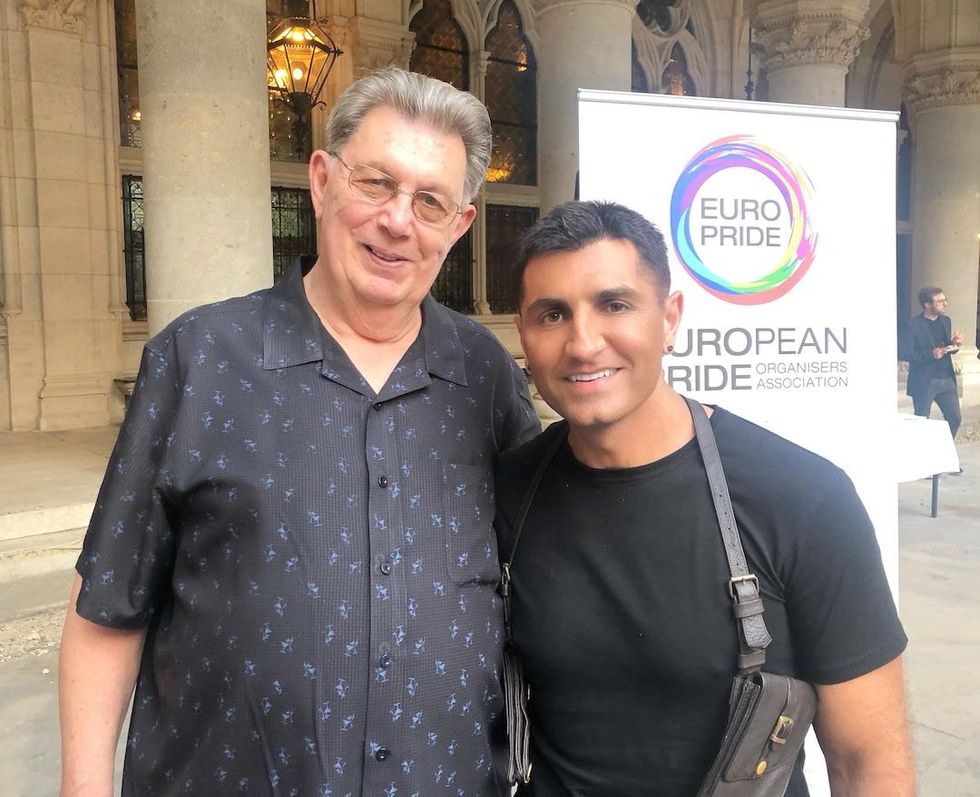
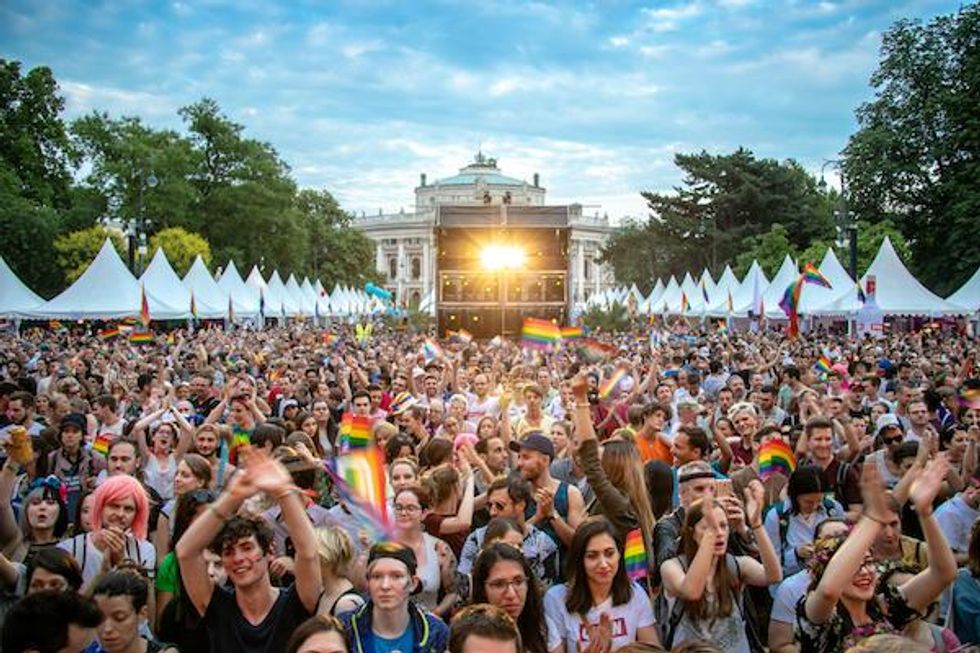
Organizing Europe’s Pride Organizations
EuroPride is an annual joint venture of the European LGBT community. It takes place in a different European city every year and attracts visitors from every corner of the globe. Vienna was chosen to host the EuroPride 2019 by the European Pride Organizers Association (EPOA) in 2016.
For EuroPride 2019, the non-profit company Stonewall GmbH was founded. Its purpose was to organize various larger events in addition to the Pride Parade and the Pride Village as well as to strengthen existing and build new partnerships within and beyond the LGBT community. Stonewall GmbH’s overall organization had some weaknesses with problematic logistics and less than hospitable reception, but they made up for it in other ways.
Europe's most famous drag queen, Conchita Wurst, was the top musical act at Saturday's parade. The Austrian Eurovision winner appeared with her own procession truck and entourage. The ‘Rainbow Parade’ started at Vienna's Burgtheater before passing through many of the city's landmarks, including Austria's Parliament building and the Vienna State Opera house. At one point, the parade came to a standstill. It was a simple, poignant pause for a moment of remembrance for those who died of HIV-AIDS or were victims of homophobic attacks.
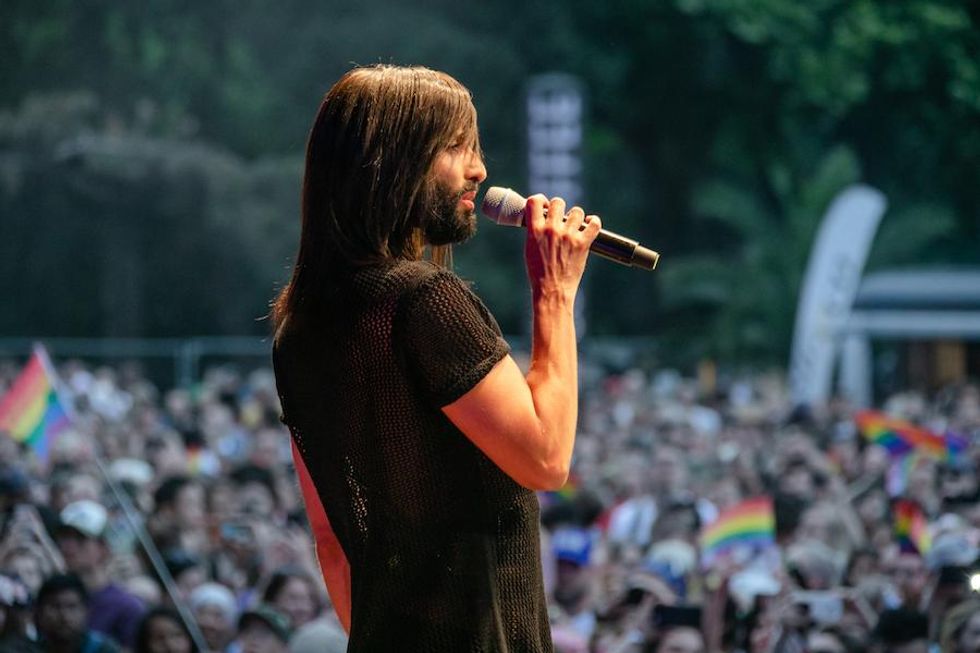
Triumph in Vienna
Temperatures of 97 degrees didn't stop 105 organizations and groups from across Europe marching in the parade.
“EuroPride 2019 was a triumph. Not only was it the first EuroPride to be addressed by a head of state, but we were thrilled to see almost half a million people in the Rainbow Parade. Organizers firmly put human rights at the center of EuroPride 2019, with a three day conference and a real sense of solidarity with community members who often don’t get the limelight or concern they deserve, including our trans siblings and refugees” said Kristine Garina, President of European Pride Organizers Association.
Called Up, Shouted Out
Garina added, “Five Prides are currently bidding for EuroPride 2022, and the hard work of the team in Vienna has ensured that EuroPride has been firmly in the public eye in 2019. I pay tribute to the team for their hard work and determination which resulted in an incredible and memorable event that seemed to take over the whole city."
EuroPride 2020 will take place in Thessaloníki, Greece June 20 through 28th.
Austria achieved full marriage equality earlier this year. It was one of the last western-European countries to do so. Austria’s constitutional court ruled in 2017 that same-sex couples should have the right to marry from 1 January 2019. Previously, same-sex couples could only enter into a registered partnership that granted fewer rights than marriage.
Two Austrian women were the first same-sex couple to officially tie the knot in the predominantly Catholic country, following years of legal challenges from gay rights groups. Nicole Kopaunik and Daniela Paier got married in a ceremony in Velden, south Austria. The couple, both 37, had been engaged for four years.
I was invited by the Vienna Tourist Board to ride along with officials and new friends on their float, which ended up winning ‘Best Float’ EuroPride 2019. Vienna Board of Tourism’s float was impressive even for this Angeleno who has just about seen it all, not only at LA Pride events through the years, and the Rose Bowl Parade, but at Pride celebrations all over the world. To mine and the delight of tens of thousands of parade goers, the tourism board had turned a huge truck into a dance club, with a full bar, DJ and two giant TV screens on each end. It was great fun watching so many people walk alongside the float with us as our DJ played the best music possible.
I felt a deep sense of the spirit of LGBTQ+ Pride in Vienna throughout the day thanks to Helena and her colleagues at the Vienna Tourist Board. Thank you for letting me ride along on your float.
“EuroPride 2019 was the perfect event to showcase Vienna’s colorful and open-minded character. Vienna proved to be a cosmopolitan kaleidoscope – a modern world city, where different lifestyles, diversity and respect are actively lived and where our many differences are perceived as our greatest strength,” said Norbert Kettner, managing director of the Vienna Tourist Board. ”Vienna has clearly emerged from being a hidden gem to becoming a hot spot for the international LGBT+ community,”
Kettner added, “After two spectacular Pride weeks with about 500,000 participants, winning the ‘best truck’ award at EuroPride parade was the cherry on the cake for the Vienna Tourist Board.”
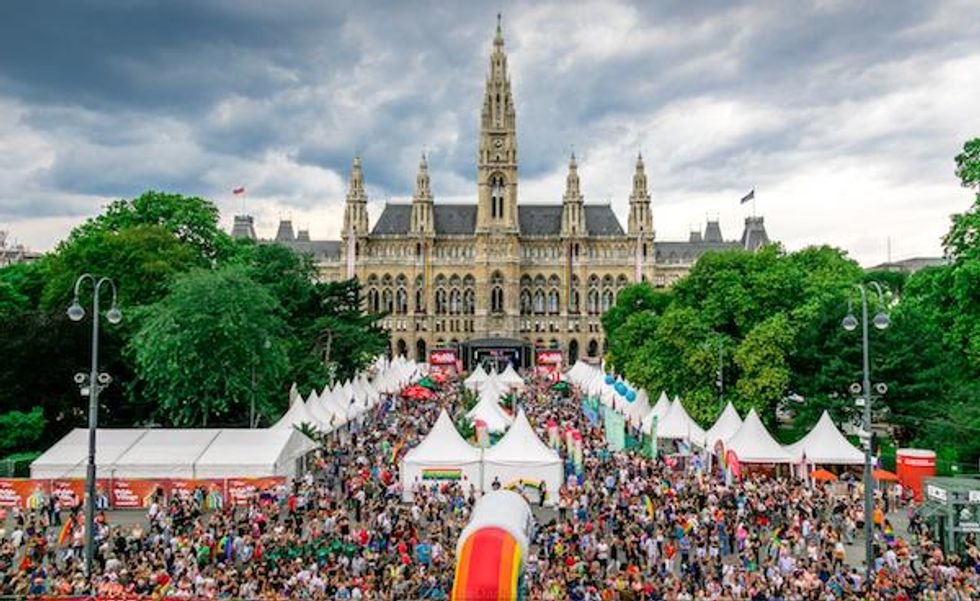
LGBTQ+ VIENNA
Vienna’s cultural appeal, in fact, is what draws an ever larger number of LGBTQ+ travelers to the city. Both the State Opera and the Volks Opera offer some of the world’s best opera performances. The new Museums Quartier (MQ for short) is on the list of must-see destinations, and the KunstHaus Wien often showcases major queer-themed exhibits and queer artists from Mapplethorpe to Pierre & Gilles. This is a city that makes opera accessible; and there’s no city on earth more closely tied to opera as an art form.
Where’s Vienna’s ‘Gayborhood’
And while Vienna does not have a single predominantly queer neighborhood, the city has a quite lively and diverse LGBTQ+ scene. Don’t expect a large number of “queer-only” places in Vienna, but rather an abundance of “LGBTQ+ friendly” and mixed places throughout town. Though many historic figures that helped shape the city in centuries past are left in an historical closet, Vienna’s young queer couples can today be seen walking hand-in-hand along the Ringstrasse Boulevard.
Some of the most-fun queer spots in town are located around the Naschmarkt area. The Naschmarkt, a vast open-air food market is any chef’s dream and connects the 4th with the 6th Districts of the city. Here one can find the LGBTQ+ Community center with the popular Café Willendorf, the ornate Café Savoy and the twenty-something’s’ hangouts Chameleon and Mango Bar, among other places.
In recent years, several queer events have taken center stage in the cultural landscape of the city. The spectacular “Life Ball” HIV charity event in May continued the Viennese Ball tradition in a truly colorful form, the “Wien ist Andersrum” (Vienna is Queer) cultural festival in early June offers a smorgasbord of off-beat cultural performances with G&L sensibilities. The colorful Loveball at the innovative WUK art and culture center takes place on the 31st of December and is a great way for LGBTQ+ travelers to ring in the New Year.
Vienna, Austria, is where east meets west in Europe. The country is located in the middle of the continent, bordering Germany, Switzerland, Italy, Czech Republic, Slovakia, Slovenia, Hungary and Liechtenstein.
As EuroPride2019 organizers noted on their group’s website in the months leading up to June’s big event, “In the last twenty years, numerous annual major LGTB events have been established in Vienna. These include the Wiener Regenbogenball and the Rosenball, among the more than four-hundred balls that take place during the carnival season in Vienna. The queer film festival Identities takes place every two years, and the International Queer Minorities Film Festival “Transition” every year. With “Wien in Schwarz,” the fetish scene gets together every year, and Vienna Pride with its Pride Village and Rainbow Parade is the absolute highlight of the LGBTQ+ annual calendar.”
With its successful blend of imperial tradition and contemporary creativity, the Austrian capital has established itself as a major travel destination.
LGBTQ rights in Austria have advanced significantly in the 21st century. Registered partnerships were introduced in 2010, giving same-sex couples some of the rights of marriage. Adoption was legalized in 2013, while full joint adoption was legalized by the Constitutional Court of Austria in January 2015. On 5 December 2017, the Austrian Constitutional Court decided to legalize same-sex marriage, and the ruling went into effect on 1 January 2019.
Vienna, Austria’s capital, lies in the country’s east on the Danube River. Its artistic and intellectual legacy was shaped by residents including Mozart, Beethoven and Sigmund Freud. The city is also known for its Imperial palaces, including Schönbrunn, the Habsburgs’ summer residence. In the MuseumsQuartier district, historic and contemporary buildings display works by Egon Schiele, Gustav Klimt and other artists.
Austria’s capital offers a unique blend of imperial traditions and stunning modern architecture. It is famous for its cultural events, imperial sights, coffee houses, cozy wine taverns, and the very special Viennese charm.
I had been to Vienna before and visited Austria’s countryside extensively. Österreich is a magnificent country, with abundance of natural beauty, historic architecture, stunning countryside, rich music tradition and very friendly locals.
Schönbrunn Palace
Schonbrunn is the largest palace in Austria and the crown jewel of Vienna. Rumor has it that sovereign Maria Theresa of Austria tried to build a place grander than the Palace of Versailles, but got tired after ten years of building. In fact, similar to the Versailles, it was originally a hunting lodge in the 17th century.
Although only a small part of the 1441 rooms are publicly accessible for visitors, one gets a complete picture of the palace’s majesty, from golden stucco, ceiling frescoes and gold-plated chandeliers. Once it was the center for imperial celebrations and today there are still events taking place there. Over three million people visit the palace annually.
Belvedere Palace
The Belvedere Palace is divided into two building units. The upper and the lower Belvedere, both were constructed on behalf of Prince Eugene of Savoy in the 18th century. There is a very large garden area between the two buildings. The palace served as the Viennese summer residence for Prince Eugene of Savoy. Both, the impressive palace and the beautiful landscaped garden, have been built in the Baroque style. Gustav Klimt’s masterpiece, ‘The Kiss’ is displayed at the palace, along with twenty other paintings by the artist.
St. Stephen's Cathedral
The Romanesque church in the heart of Vienna was consecrated in the year 1147. There were constantly redesigns and structural extensions which were influenced by different styles like late Romanesque and Baroque. St. Stephen's Cathedral’s the famous Pummerin bell is known worldwide and is considered a cultural treasure. The local people use also the name Steffel for this impressive cathedral. The church has an old organ tradition that adds to its mystique. The main part of the church contains 18 altars, with more in the various chapels. The High Altar and the Wiener Neustadt Altar are the most famous.
Graben
Graben is the hub of shopping in the heart of Vienna, with a good mix of luxury stores, mid-priced local designers and some bargains too. The origin of this street dates back to the old Romans times and is surrounded by popular alleys, notable eateries and unique shops. Most of the buildings in this pedestrian area were built in the 17th and 18th centuries. A few noteworthy establishments in the area include the porcelain factory Augarten, the court jeweler Heldwein and also the court perfumery Nägele & Strubell. You can spend at least half a day here, sight-seeing, shopping and grabbing an authentic Viennese lunch.
Vienna Opera House
Vienna Opera House is one of the most celebrated and prestigious opera houses in the world. After all, Vienna is the city of music. With 1709 seats and 567 standing-rooms the audience can watch daily opera performances, ballets and concerts. Empress Elisabeth and Emperor Franz Joseph premiered the opera house in 1869, with Wolfgang Amadeus Mozart’s ‘Don Giovanni’ as the inaugural opera.
